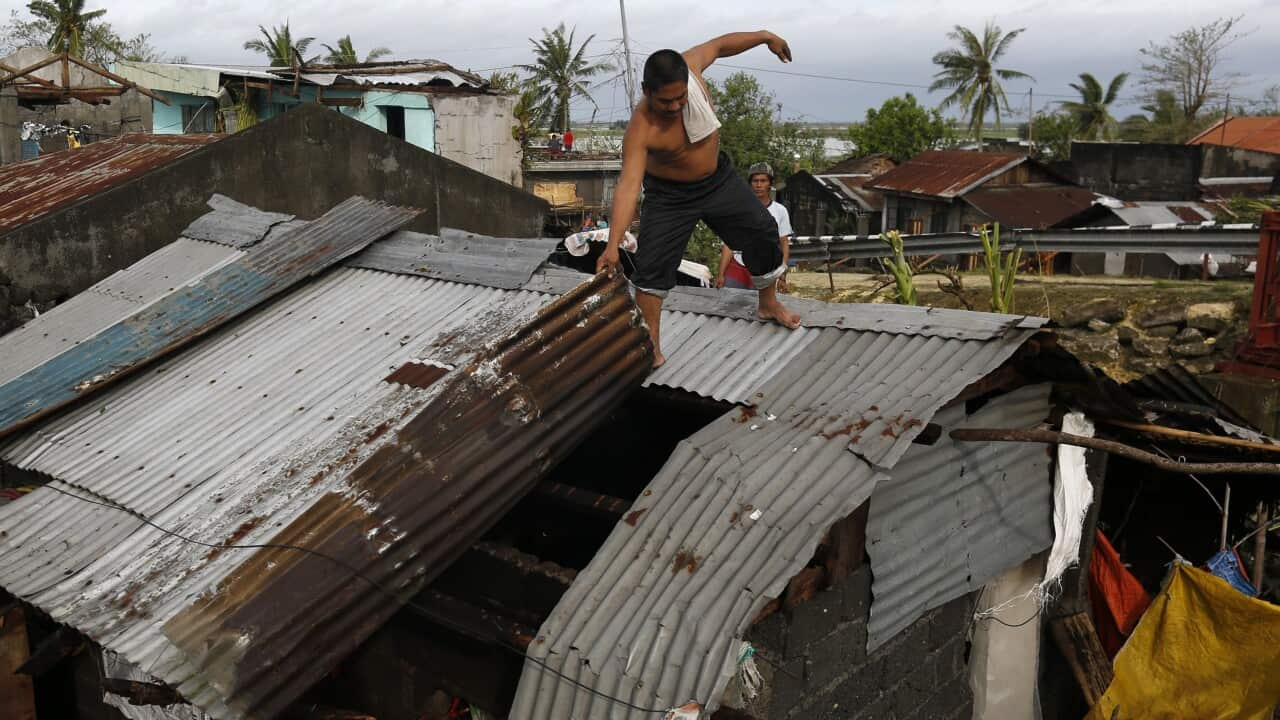Typhoon Nock-Ten (known in the Philippines as Nina) , which made landfall on the eastern island province of Catanduanes on Sunday, is forecast to move westward towards the country's heartland, packing winds of 215 kilometres (134 miles) per hour.
The Philippine National Police said three people died in Albay province, including a 57-year-old woman who was hit by a concrete wall inside her house on Sunday evening, and an elderly couple who drowned in a river on Monday morning.
More than 383,000 people have fled their homes while over 80 domestic and international flights have been cancelled, the civil defence office said, as the unusually late typhoon marred Christmas celebrations in the largely Christian nation.
The government weather station said Nock-Ten is moving northwest at 20 kilometres per hour and is expected to affect Manila and the surrounding area later in the day.
The bustling metropolis of about 13 million was eerily quiet the day after Christmas with the usual holiday revellers staying indoors as the storm approached.
The civil defence office said the capital could suffer "heavy to intense rains, flashfloods and severe winds," with rescue boats ready to be deployed in case rivers overflow.
"Our local disaster councils are on red alert. We have pre-positioned relief supplies and rescue and (road) clearing equipment in Metro Manila," said Mina Marasigan, spokeswoman for the country's disaster monitoring council.
The coastguard on Sunday ordered the beaches south of Manila to be cleared of holidaymakers by Monday, while residents of the capital's seaside slums were warned to leave their homes.
The storm previously cut off electricity to millions and forced government agencies to order evacuations of whole communities in the eastern region of Bicol which felt the brunt of the storm on Christmas day.
Wet Christmas
In the Bicol town of Ligao, many streets and farms were in ankle-deep water while some homes remained caked in mud left by flooding.
Masseuse Erna Angela Pintor, 20, said she and her family spent a sleepless Christmas in fear as the strong winds ripped off part of their roof.
Their neighbours living near the river bank sought refuge in their home as the waters rose to their chests, she recalled, though her own family was luckier.

Filipino children clear debris on a roof in the typhoon-hit town of Pamplona, Camarines Sur, Philippines, 26 December 2016. Source: EPA
"The floods (last night) only reached to our knees. Thank goodness the current wasn't that strong," she told AFP.
"This was supposed to be a celebration but we cannot celebrate. This is a sad Christmas for us. No one (in the family) died but a lot of our neighbours' homes were washed away."
Marasigan said hundreds of people in Bicol celebrated Christmas day in evacuation centres where many had to make do with emergency food packs.
Some local officials had offered roast pigs -- the traditional Filipino holiday fare -- to entice constituents to go to evacuation centres, Marasigan said.
"Government workers in the Bicol region, particularly those involved in disaster relief and operations, are working round-the-clock even on Christmas Day as typhoon Nina (the local name of Nock-Ten) maintains its strength and continues to pose a serious threat to Bicol region," President Rodrigo Duterte's spokesman Martin Andanar said in a statement.
Some 20 typhoons or lesser storms strike the Philippines each year, routinely killing hundreds of people, and Bicol is often the first region to be hit.
Mammoth tsunami-like waves devastated the city of Tacloban and nearby areas when super typhoon Haiyan struck the central Philippines in November 2013, leaving 7,350 people dead or missing.

